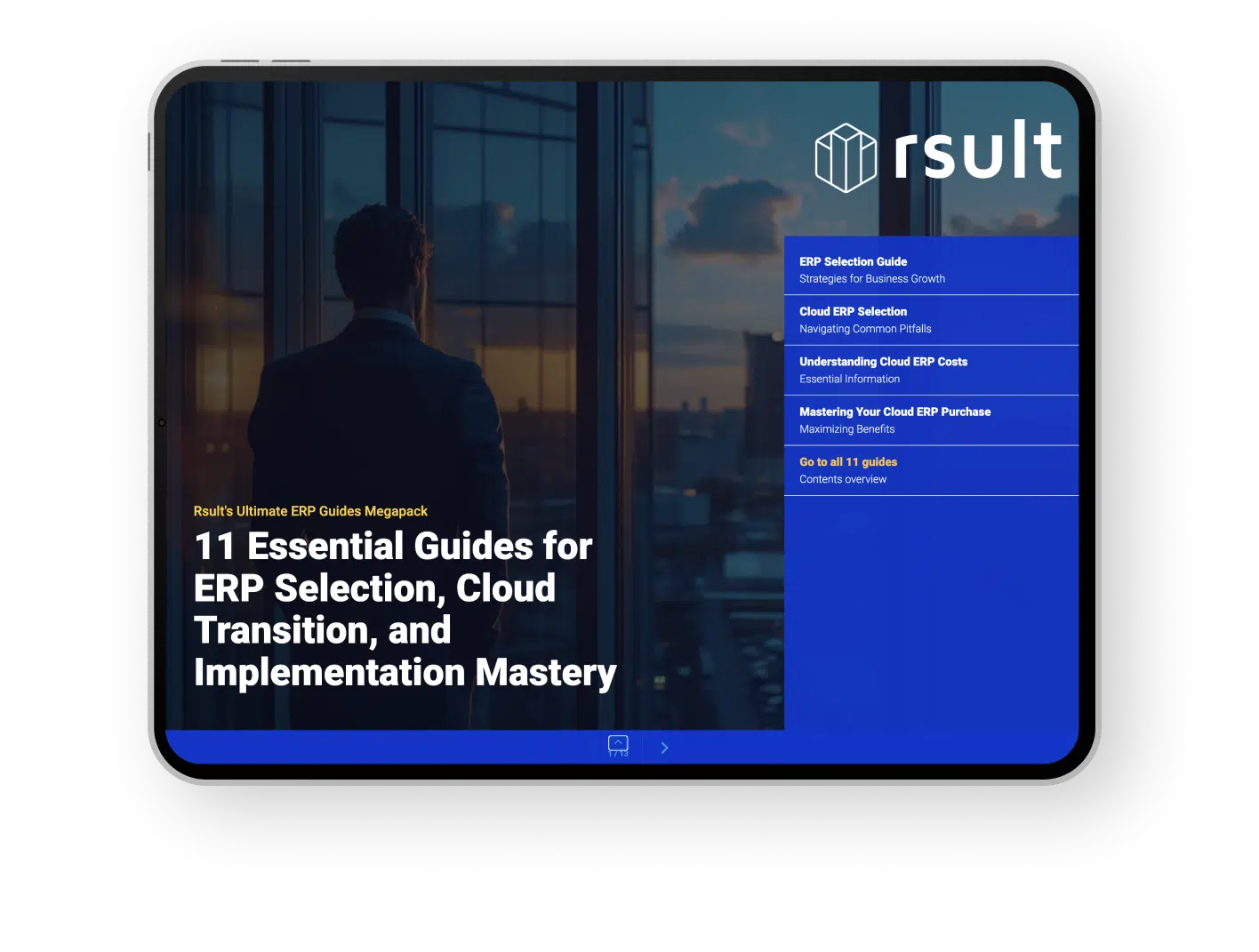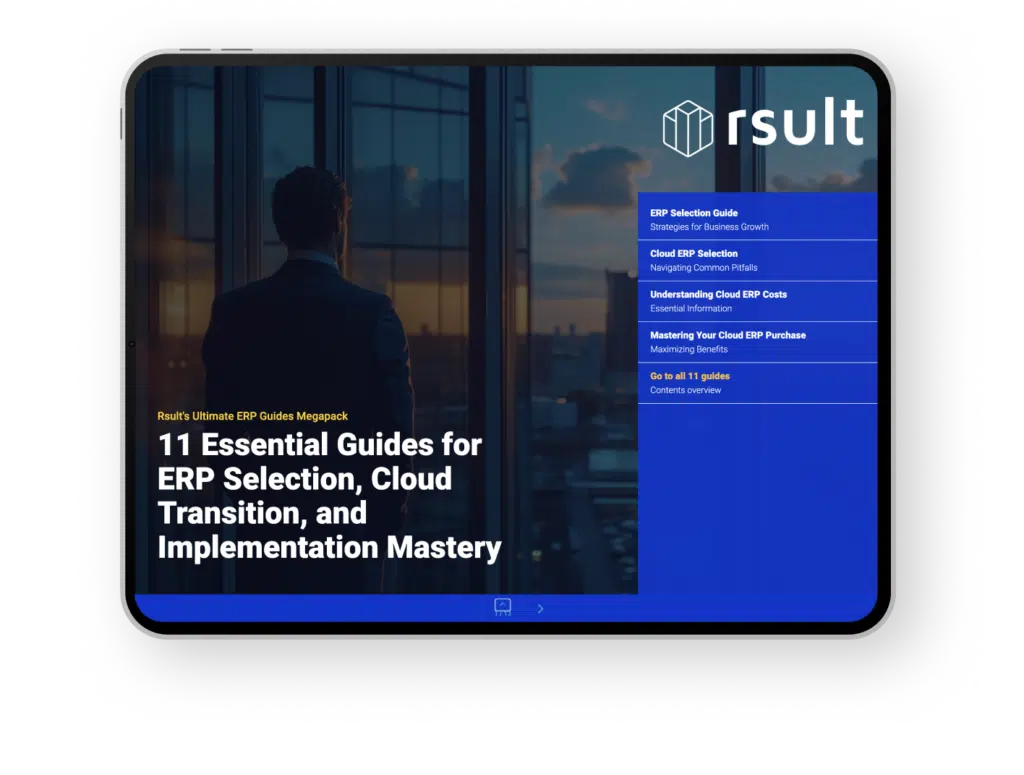When it comes to advancing business operations, the thought of an ERP deployment can evoke as much hope as it does hesitation due to the potential ERP implementation costs. Deciding to upgrade or revamp your organization’s digital backbone with an Enterprise Resource Planning (ERP) system requires not only a considerable investment but also a candid understanding of the expected expenses. It’s not just about the software; it’s about the full end-to-end process that brings this complex tool to life within your company. Let’s dissect the estimated cost of ERP implementation and uncover the factors that shape the financial investment necessary for a successful ERP journey.
Key Takeaways
- Recognize that an ERP’s license fee only covers a portion of the total ERP implementation cost.
- User numbers, customization, and data migration are significant factors contributing to overall ERP deployment expenses.
- Anticipate potential costs up to 200% beyond the initial software fees for a comprehensive ERP setup.
- Acknowledge the variability of the estimated cost of ERP implementation based on company size and specific needs.
- Prepare for the long-term with maintenance and upgrade considerations in your ERP financial planning.
Understanding ERP Implementation Costs
Embarking on the journey of ERP implementation requires a deep dive into the various costs associated with this significant investment. Beyond the surface level of license expenses lies a complex matrix of financial responsibilities that piece together the true cost of ERP deployment. By comprehensively understanding the variables that contribute to overall expenditures, businesses can secure a cost-effective ERP implementation while aligning their budgetary constraints with their long-term objectives.
An Overview of Total ERP Expenditure
A thorough ERP implementation cost breakdown must take into account several critical components. Key elements comprising this financial framework include user licensing, the intricacy of features, selection of modules, degree of customization, seamless integration, methodical data migration, and staunch ongoing maintenance. Each of these areas represents a cog in the machinery of cost calculation, collectively capable of doubling or even tripling the base investment in software licensing. This underscores the necessity for strategic planning in developing a workable yet adaptable ERP budget.
Average Budget Per User Insights
When developing a strategic approach for a cost-effective ERP implementation, businesses must consider the average budget per user which significantly varies based on organizational size. Small businesses average around $7,143 per user, mid-sized businesses spend approximately $8,542, and large enterprises may incur about $7,257 per user, calculated over a five-year period. This gradient of costs accentuates the importance of tailoring the ERP budget to the scale of the business and its user base, guaranteeing that the 3-dimensional user need versus cost balance is judiciously managed.
Preparation for Full Project Scope Budget
In preparing for an ERP implementation budget, decision-makers should brace for a spectrum of expenses that may amount to 100% to 200% of the software licensing fees. The allocation of funds should be meticulously planned to embrace the full project scope, recognizing that proactive management and detailed foresight are the cornerstones of circumventing unexpected costs. Ensuring that the entirety of the ERP implementation cost breakdown is comprehensively mapped out aids stakeholders in safeguarding against overlooked financial commitments and securing an economical ERP deployment.
Assessing Your ERP Implementation Budget
When it comes to understanding ERP implementation costs, a meticulous approach is pivotal to aligning your budget with the anticipated financial outlay. This task not only encompasses immediate expenses but also looks ahead to encompass the scaling business needs. Identifying and navigating the variety of vendor pricing models is the first step in this journey.
Delving deeper into the assessment, infrastructure necessity emerges as a significant consideration. The size and complexity of your technical environment will dictate a portion of the costs. Coupled with these are the human resources expenses, which include not just the implementation team’s compensation but also potential costs for training and development post-deployment.
To provide a visual guide to the budgeting process, consider the following table which outlines some common considerations and potential costs associated with them:
| Cost Factor | Initial Expense | Ongoing/Recurrent Expense |
|---|---|---|
| Vendor Pricing Models | Varies based on contract terms | Subscription renewals, feature additions |
| Infrastructure Requirements | Hardware, server setup, network enhancements | Maintenance, upgrades, scalability investments |
| Human Resources Expenditures | Implementation team salaries, consultant fees | Training programs, technical support staff |
| Subscription Costs | Initial software license | Annual or monthly licensing fees |
| Other Potential Charges | Customization, data migration | Integration with new services, add-ons |
Remember, a common oversight when understanding ERP implementation costs is underestimating future growth. As your user base expands, so will the need for additional licenses, greater support, and potentially more robust infrastructure or more complex integration requirements. Ensuring that your ERP implementation budget is both comprehensive and flexible is essential in accommodating for these scales of progression.
It is evident that a well-planned ERP implementation budget is more than a ledger of predicted expenses; it’s a blueprint for fiscal responsibility that supports your enterprise’s evolution. Careful consideration of the varied cost factors that play into understanding ERP implementation costs will empower your organization to make informed investment decisions for a successful ERP initiative.
The Top ERP Implementation Costs to Consider
When organizations embark on the journey of integrating an Enterprise Resource Planning (ERP) system, the consideration of various cost factors becomes paramount. Understanding the Factors affecting ERP implementation cost is critical for companies to accurately forecast their budget and avoid unforeseen financial strains. In this section, we delve into the primary expenses that businesses face during ERP rollout.
User Numbers and Licensing Fees
The number of users accessing the ERP system directly impacts the ERP deployment expenses. As a business expands, the scalability of the ERP solution chosen must accommodate an increase in user licenses. This often requires a licensing agreement that is both flexible and economical, aimed at supporting the dynamic nature of business growth. The cost implications for user licenses can vary significantly based on several factors, including the ERP vendor, the category of users, and how these parameters align with company expansion plans.
Customization and Process Integration Costs
Another critical factor that affects the overall ERP implementation budget is the degree of system customization and process integration required. While standard features in an ERP system are valuable, many organizations need tailored solutions to address specific business processes. Custom features and bespoke integration work can raise ERP implementation pricing, particularly when it involves a comprehensive overhaul of the existing business processes to fit into the new ERP infrastructure.
Training, Testing, and Support Expenditures
Once the system is customized and integrated, focus shifts to employee training and system testing. Deploying a robust ERP system is a complex process, and effective training is imperative for ensuring users can navigate and utilize the system efficiently. Training can range from simple user interface instruction to deep functional process education. Similarly, comprehensive system testing is vital to uncover any potential issues before going live. Organizations should also consider ongoing support and maintenance costs to address any operational hiccups and updates post-deployment, key aspects of solidifying a realistic ERP implementation pricing model.
In conclusion, analyzing these core expenses is fundamental in crafting a well-rounded ERP budget. It is the intricate details within user licensing, system customization, and thorough training, testing, and support that unfold into the broader narrative of ERP implementation costs. Understanding and planning for these factors will lead to more predictable and manageable expenses, thereby ensuring a smoother ERP adoption journey for organizations.
Deciphering ERP Architecture Options
Choosing the right architecture for your ERP system is a critical decision with significant implications for ERP implementation cost breakdown. Businesses must evaluate whether a comprehensive all-in-one solution or a more tailored approach is best suited to their needs. This decision not only impacts the initial implementation cost but also the long-term adaptability of the ERP system within the evolving landscape of business technology.
The All-in-One Conundrum
All-in-one ERP solutions often promise a high level of integration, covering a wide range of business processes. Yet, these systems can lead companies to over-invest in functionalities that they may never use. When attempting to achieve a cost-effective ERP implementation, one must question whether the convenience of a single comprehensive system outweighs the potential for wasted resources and the limitations it may pose for future scalability.
Furthermore, while such systems offer the simplicity of a unified platform, they can become complex and cumbersome when the business requires changes beyond the scope of the original setup. Additional modules and feature sets introduced later can unexpectedly drive up the total costs.
Custom Features vs. Out-of-the-Box Solutions
Conversely, evaluating ERP options based on scalability and customization potential can lead to a more prudent financial outlay. Customizable ERP systems enable companies to select specific features that closely match their operational requirements, often resulting in better alignment of the software with the company’s processes.
- Pros of Custom Features:
- Highly tailored to business needs
- Flexibility to adapt and expand
- Potential for greater operational efficiency
- Cons of Custom Features:
- Higher initial costs and longer implementation times
- Require more resources for maintenance and updates
- Pros of Out-of-the-Box Solutions:
- Lower initial expenditure
- Faster deployment
- Generally simpler to maintain
- Cons of Out-of-the-Box Solutions:
- Limited customization options
- Potential need for future investments in add-ons
In the pursuit of a cost-effective ERP implementation, companies must weigh these considerations against the backdrop of six core elements that define ERP implementation cost breakdown: system complexity, customization levels, user base, training requirements, maintenance needs, and scalability prospects. Striking the right balance between initial cost savings and the investment in a system that can grow with the company is the key to achieving a cost-effective ERP solution.
ERP Implementation Cost Breakdown
Understanding the ERP Implementation Cost is essential for businesses aiming for a successful deployment. These expenses stretch further than just the software acquisition; they encompass an array of investments tailored to prepare and sustain a corporate ecosystem capable of supporting an intricate ERP system. Here’s an insight into the different components that contribute to ERP Implementation Cost.
- Software Licensing: This front-end investment often accounts for a substantial part of the total cost, varying based on users and required features.
- Infrastructure: Necessary hardware to support the ERP system includes servers, databases, and other IT infrastructure, with costs fluctuating based on whether the solution is on-cloud or on-premise.
- Training and Support: Ensuring the workforce is adept at using the ERP software calls for training and potentially ongoing support services.
- Customization and Integration: Adapting the ERP to the specific needs of a business and its existing systems can add to the expense.
| Cost Component | Role in Implementation | Estimated Impact on Budget |
|---|---|---|
| Software Licensing | Access to the ERP platform for users | High |
| Infrastructure | Servers, data storage, and related hardware | Moderate to High |
| Training and Support | Education for staff and ongoing assistance | Moderate |
| Customization | Tailoring the software to fit business processes | Variable |
| Integration | Ensuring the ERP works alongside other systems | Variable |
| Maintenance and Upgrades | Long-term system upkeep and functionality enhancements | Moderate to High |
| Human Resources | Staff needed to manage and operate the ERP system | Moderate |
The endeavor to maintain a finely-tuned ERP system extends beyond initial setup, with costs such as maintenance and upgrades driving a significant part of the long-term financial outlook. Additionally, human resource investments—for operators, analysts, and managers dedicated to running the ERP environment—are equally pivotal to the system’s efficacy. When anticipating the ERP Implementation Cost, forecasting for these ongoing elements ensures a realistic and comprehensive budget.
As businesses progressively lean on modern ERP solutions to streamline operations, understanding the depth of ERP Implementation Cost is more important than ever. Armed with a detailed breakdown, companies can navigate the financial terrain with confidence, ensuring resources are judiciously allocated to each segment for optimum ROI and operational excellence.
Choosing Between In-House vs 3rd Party ERP Implementation
Deciding between conducting an ERP implementation with your organization’s resources or enlisting the expertise of a third-party can shape the trajectory of your business’s technological advancement. This comparison often boils down to factoring in the ERP implementation budget and gauging the optimal balance between cost and expertise.
An in-house implementation may appeal to those who seek to strengthen internal capabilities and avoid the costs associated with hiring external consultants. However, this approach can demand a significant allocation of your business’s resources, not only in terms of budget but also in employee time and focus. The complexity of an ERP system may require specialized knowledge that your staff may not possess, which can inadvertently inflate ERP deployment expenses due to longer rollout periods or potential missteps.
Engaging with a third-party service provider, on the other hand, often involves a clearly defined ERP deployment expense. These specialists bring a wealth of experience and can mitigate risks associated with ERP implementation, ensuring a streamlined process. However, without diligent contract management, the costs could increase beyond initial estimates.
When considering these options, it is vital to comprehensively assess not just the immediate costs but the long-term return on investment. Training, support, and future upgrades are just as crucial as the upfront ERP implementation budget. Below is a comparative synopsis of in-house versus third-party implementation considerations:
| In-House Implementation | Third-Party Implementation |
|---|---|
| Potential for lower upfront cost | Predictable cost structure |
| Utilization of internal resources | Access to specialized expertise |
| Risk of extending project timeline | Time-efficient implementation |
| Need for employee ERP training | Ongoing support and service |
| Possible lack of specialized knowledge | Higher initial investment |
ERP systems are a significant investment, and the choice between in-house and third-party options has lasting implications on both an ERP implementation budget and the future agility of your business. Reflecting on these considerations and seeking advice from ERP experts can lead to informed decisions that align with your organization’s goals and budgetary constraints.
Factors Affecting ERP Implementation Cost
Implementing an Enterprise Resource Planning (ERP) system can enhance a company’s efficiency and provide a substantial return on investment. However, several critical factors directly influence the overall ERP implementation cost. Understanding these elements is vital for establishing a realistic ERP implementation budget and ensuring successful deployment.
Business Size and Complexity
The organizational intricacies such as company size, industry specifics, and complexity of business processes play a substantial role in determining the cost of ERP implementation. Not only do these factors influence the initial pricing, but they also dictate the level of customization and personnel training necessary to fully integrate the ERP system into daily business operations.
On-Premises vs Cloud-Based ERP Systems
Deciding between an on-premises and a cloud-based ERP system has significant financial implications. While on-premises solutions may require a heftier initial investment in infrastructure, cloud-based systems, although lower in upfront costs, could accrue higher operational expenditures due to subscription fees. This decision merits careful evaluation within the context of the proposed ERP implementation pricing structure.
Software and Licensing Models
Varying software offerings, and their associated licensing models, can sway the cost of ERP implementation. From all-inclusive user licenses to modular, pay-per-feature structures, the choice of software licensing has a direct correlation to the ERP implementation budget. Companies must meticulously match their licensing selection with their business needs and budgetary constraints.
| Factor | Impact on Cost | Considerations for Budgeting |
|---|---|---|
| Business Size and Complexity | Increased need for customization and training | Scale of operations, number of users, customization level |
| ERP Deployment Model | Choice between up-front investment or ongoing subscriptions | Infrastructure costs vs. long-term subscription fees |
| Software Licensing | Variance based on per-user or per-module pricing | Long-term scalability vs. immediate capabilities |
In the dynamic landscape of ERP systems, weighing these critical factors ensures that businesses can anticipate the breadth of expenses entailed. Such a proactive approach facilitates a comprehensive understanding of the factors affecting ERP implementation cost, empowering organizations to navigate their ERP journey with financial clarity and foresight.
Navigating ERP Implementation Pricing Models
For businesses contemplating an ERP system, understanding ERP implementation costs is as critical as the features it offers. The process of accurately calculating these figures is a meticulous endeavour, involving the careful assessment of vendor strategies and pricing structures. Proper navigation through this phase is a cornerstone for achieving a cost-effective ERP solution tailored to your company’s needs.
ERP Vendor Quote Strategies
When requesting quotes for ERP systems, it’s crucial to engage in strategic negotiations focused on your company’s specific requirements. This involves a clear and comprehensive list detailing the number of users, necessary features, preferred deployment type, and scalability options. Such prep work aids in obtaining quotes that accurately reflect the true scope of ERP costs tailored to your business’s growth plans.
Understanding Pricing Per User, Feature, and Module
Gaining insight into the breakdown of costs per user, feature inclusion, and module selection is essential for creating a realistic ERP budget. Each component has financial implications, making it imperative for companies to understand how these elements coalesce into the final cost. The ability to discern the long-term value against immediate costs is a significant advantage in achieving a scalable ERP investment.
Below is a visual guide to help shed light on the aspects that typically influence the pricing models of an ERP implementation:
| Component | Description | Impact on Cost |
|---|---|---|
| User Licensing | Number of users with access to the system | Scales with the number of users; bulk user discounts may apply |
| Features | Functionalities included in the ERP system | More complex features may increase cost; custom features higher still |
| Modules | Separate units or applications serving specific business areas | Add-on modules can increase overall price; essential to assess value to operation |
| Deployment Type | Cloud-based or on-premises solution | Cloud solutions may incur ongoing subscription costs; on-premises require upfront hardware investments |
| Scalability | Ability to grow and adapt with business needs | Scalable systems may start at a higher price point but provide long-term savings |
Understanding ERP implementation costs necessitates a detailed and clear approach, where strategies and breakdowns become the mantra for negotiation and decision-making. It’s not simply about seeing the numbers but interpreting the underlying value propositions these costs represent.
Conclusion
Embarking on an ERP system implementation is an investment in your business’s future. Diligent planning and a well-strategized budget are the keystones of a cost-effective ERP implementation that won’t drain your resources or surprise you with hidden costs down the line. A thorough understanding of the ERP implementation cost is invaluable, requiring a clear, unobstructed view of all the variables that could affect your bottom line. It’s not just about the upfront investment but also the estimated cost of ERP implementation over time, considering necessary customizations, user training, and system upgrades.
Businesses must align their ERP implementation budget with long-term objectives and immediate operational needs to optimize their investment. This alignment ensures the selection of relevant features and integrations, while also securing the necessary expertise for a successful rollout. Whether you’re a small, mid-sized, or large business, the focus should always be on shaping an ERP deployment that is specifically suited to your unique business dynamics to promote sustainable growth and enhance operational efficiency.
In summary, the cost-effective implementation of an ERP system stands on the pillar of meticulous planning, driven by an informed understanding of the variables at play. By placing emphasis on the projected ERP implementation cost and the nuanced needs of your business, you can pave the way for not just an economically sound deployment but also for a dynamic tool that will support and stimulate your business’s advancement well into the future.






